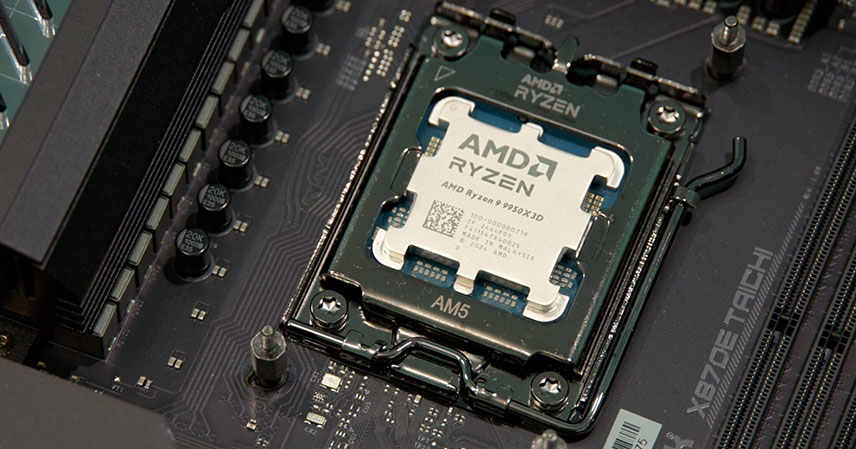A disturbing trend has sent shockwaves through the PC building community: reports of high-end AMD Ryzen 7000 series CPUs physically burning out. 🤯 Photos circulating online show catastrophic damage, with chips destroying themselves and sometimes taking the expensive motherboard with them. In a much-anticipated statement, AMD has pointed the finger not at its own hardware, but squarely at its motherboard partners.
A Familiar Story in the Chip World 👀
This situation is creating a strong sense of déjà vu for tech enthusiasts. It almost perfectly mirrors the controversy Intel faced just last year with its 13th and 14th-gen CPUs. In that case, widespread instability and degradation issues were linked to motherboard manufacturers applying aggressive, “out-of-spec” power settings by default to win performance benchmarks. Now, it seems AMD is in the same boat, battling the same problem.
AMD’s internal investigation concluded that its partners’ motherboard firmware (BIOS) was pushing excessive and unsafe voltages to the CPUs. This was particularly prevalent when users enabled one-click memory overclocking profiles like AMD EXPO, a feature designed to make performance tuning easy for everyone. These dangerously high voltages, intended to squeeze out every last drop of performance, are reportedly causing catastrophic thermal failure in the chips.
The Technical Culprit: SoC Voltage ⚡
The core of the issue lies with the SoC (System on a Chip) voltage. While overclocking is a common practice for enthusiasts, motherboard makers were allegedly allowing voltages to spike far beyond AMD’s own safety limits. This sustained high voltage leads to rapid degradation and, in the worst cases, the physical “burning out” that users have been reporting. It’s a classic case of pushing hardware beyond its breaking point for the sake of marketing numbers.
In response to the growing public outcry, major motherboard manufacturers like ASUS, MSI, and Gigabyte have begun rolling out urgent BIOS updates. These updates are designed to strictly cap the SoC voltage at a safer level (around 1.3V), preventing future failures. For users who have already lost hundreds, or even thousands, of dollars in hardware, however, the question of financial liability remains a very sore point.
Conclusion: A Complex Web of Responsibility 🤔
Ultimately, this dispute highlights the complex and sometimes fragile interdependencies within the PC hardware ecosystem. While motherboard makers are issuing fixes, the incident raises critical questions about responsibility, quality control, and the relentless pursuit of performance. The high-stakes world of semiconductor manufacturing, from massive government investments in firms like Intel to consumer-facing issues like this, is becoming more complex than ever, often leaving the end-user caught in the middle.
Source: Like Intel before it, AMD blames motherboard makers for burnt-out CPUs



